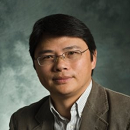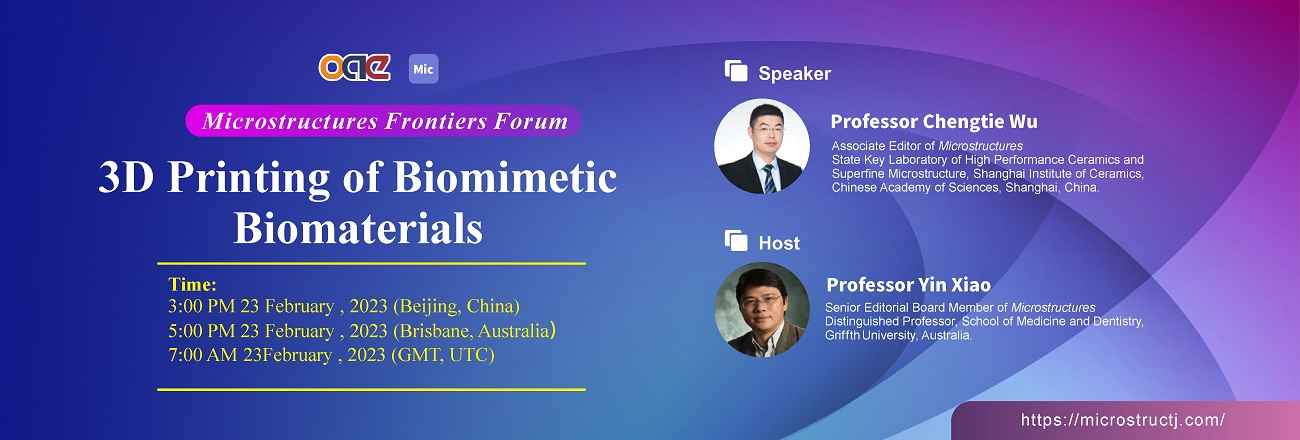Contents
Host

Professor Yin Xiao
Senior Editorial Board Member of Microstructures
Distinguished Professor, School of Medicine and Dentistry, Griffith University, Australia.
Distinguished Professor, School of Medicine and Dentistry, Griffith University, Australia.
Speaker
Professor Chengtie Wu
Associate Editor of Microstructures
State Key Laboratory of High Performance Ceramics and Superfine Microstructure, Shanghai Institute of Ceramics, Chinese Academy of Sciences, Shanghai, China.
State Key Laboratory of High Performance Ceramics and Superfine Microstructure, Shanghai Institute of Ceramics, Chinese Academy of Sciences, Shanghai, China.
Dr. Chengtie Wu, is a professor in Shanghai Institute of Ceramics, Chinese Academy of Sciences, and Vice president of the Shanghai Branch of the Chinese Academy of Sciences. Prof. Wu is mainly engaged in the research of biomedical materials and implantable medical devices, and has won the National Fund for Outstanding Young Scholars, the leader of the Ten Thousand Talents Program, the national overseas high-level talents (youth) and the Humboldt scholars. He edited a CRC English monograph and participated in the writing of 11 chapters of the English monograph. More than 280 SCI papers have been published in internationally famous journals such as Materials Today, Advanced Materials, Science Advances, Biomaterials, with H index 81 (Web of Science search). He has been selected as 2% of the world's top scientists. He has been selected by Elsevier in the list of highly cited scholars in China from 2015 to 2021 for seven consecutive years. A total of 60 patents have been applied for, and 30 Chinese patents and 2 American patents have been granted, of which 15 patented technologies have been transferred to the company. It won the JMC - Lectureship Award of the Royal Society of Chemistry (the only one in the world in 2015), the IUMRS Young Scientists Award of the International Materials Association, the Outstanding Young Scientist Award of the Chinese Biomaterials Society, the Young Scientist Award of the Chinese Ceramics Society, the First Prize of Science and Technology of the Chinese Biomaterials Society.
Introduction
For the therapy and regeneration of bone defects resulting from malignant bone disease, it is of great importance to developing multifunctional biomaterials for bone therapy and regeneration. Conventional biomaterials always lack multifunctional properties, limiting their application for treating and repairing bone disease (e.g. bone tumors)-initiated defects. How to design and prepare bioscaffolds with favorable microenvironments for disease therapy and tissue regeneration is one of the interesting topics in the fields of biomaterials and tissue engineering. We developed several strategies, including harnessing nutrient elements, biomimetic structure and functional interface as well as thermo-therapy to construct multifunctional scaffolds by the 3D-Pringting method for therapy and regeneration of bone tissues. It is interesting to find that both nutrient elements and biomimetic structure of the printed bioscaffolds have an important effect on the stimulation of osteogenesis and angiogenesis of stem cells, and thermotherapy plays an important role to treating bone tumors. Therefore, we put forward new concept that 3D-Printed bioscaffolds combined with bone therapy and regeneration could be a new direction of bone tissue engineering.






